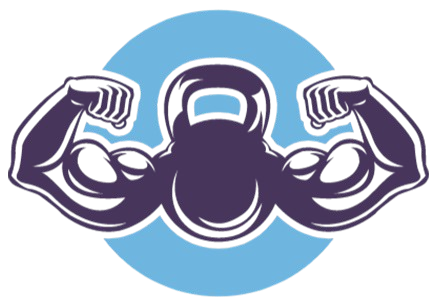Fitpro Income
What Does Hiring A Personal Trainer Include?
So you’re thinking about hiring a personal trainer, but you know it can be an expensive undertaking, so how can you be sure that you are getting your money’s worth when you hire a PT for help with your fitness goals? Well, how about knowing exactly what to expect from your personal trainer?
That’s a pretty good start, right?
Here’s a sneek peak of what personal training includes
- Tailored exercise prescription
- Realistic goal setting
- First-class exercise instruction
- Fitness testing and measuring
- Expert knowledge at your fingertips
There’s a bunch more that you’ll get from hiring a PT, so we’ll also be discussing some of the less obvious benefits you’ll get. You’ll also be able to tell if there are elements missing from your training programs that your trainer should be providing, so keep reading.

What does personal training include?
- Realistic and attainable goal setting
- Diatary advice
- Tailored exercise prescription
- First-class exercise instruction
- Efficient use of gym time
- Fitness testing and measuring
- Increased flexibility
- Expert knowledge at your fingertips
- Corrective exercise (for some PTs)
- Motivational assistance
- Homework
- Conclusion
Realistic and attainable goal setting
No fitness journey should be started until you have a clear idea of exactly what it is that you are looking to achieve written down and planned out.
A personal trainer will be able to sit you down, discuss what you are looking to get from your training, and tell you exactly how achievable it is in the timeframes you’re expecting.
For example, any trainer worth their salt will not let you think that it’s possible for you to lose a stone (14lbs) in the next month before a big wedding event.
They will, however, tell you what you can realistically get out of your time training with them.
Most trainers have a wealth of knowledge behind them (which we will discuss in more detail later), so no matter what your goals are, they will be able to set realistic and attainable goals with you.
Having goals that you can actually hit massively boosts your confidence and shows you that exercise really does work. And of course, as soon as your current targets are hit, you’ll be given a new set to complete, so you’re always making progress.
Dietary advice

The cornerstone of any personal training program is the dietary advice that comes with it. If you aren’t eating the right foods at the right times, then you can pretty much kiss your success goodbye.
A quick word of warning though, most trainers are only allowed to give basic nutritional advice and can’t hand out diet pans left and right. However, what they can offer is some simple and effective advice about what you will need in terms of calories and how you can reach those goals.
Nutrition doesn’t always need to be as complicated as you would think, and for 90% of people, the basic stuff will do just fine.
There are PTs out there that are fully nutritionally qualified and can help with diet plans if that’s what you really think you’ll need, but you might need to do a bit of research in your local area to find them.
Tailored exercise prescription
A PT will design the perfect workouts for you to attain your goals in the fastest possible time. They will include training different muscle groups in ways that are proven to be effective.
They will set specific reps and sets (the number of times you perform the exercises) in line with your fitness goals and ability. For example, a person looking to increase muscle mass may be asked to complete 4 sets of 10 reps to almost failure each time with a specific amount of rest between each working set.
A person looking to lose weight, however, will be given a completely different set of exercises and asked to complete usually 3-4 sets of 15 to 20 reps with shorter rest periods. This is what has been proven to be effective for this type of workout.
Your trainer will discuss during your initial consultation, any injuries you may have or any exercises you may not feel comfortable performing. By doing this they can ensure they never ask you to perform an exercise that could make you feel uncomfortable, either physically or mentally.
Without the knowledge of which exercises to complete, how many reps and sets you need to do and how long you should be resting, it’s very easy to end up guessing, which is the fastest way to make little to no improvement. This is what makes a lot of people who start a training regime quit after only a short period of time.
First-class exercise instruction

Exercise can be dangerous if you don’t know what you’re doing.
Sure, you can watch YouTube videos or see what others are doing in the gym, but there is a multitude of ways that you could be injured in a gym which would hold you back in terms of reaching any fitness goals you may have.
You may also not be performing the movements in the most effective ways, so you could be missing out on gaining extra benefits from making only tiny adjustments to your lifts or cardio sessions.
For example, running on a treadmill burns calories, that much is obvious, but a trainer could show you that if you run in several short bouts of maximal intensity, you’ll be burning twice the calories in a quarter of the time, which is obviously a lot more effective.
Efficient use of gym time
Everyone is busy, and fitness is something that a lot of people just want to get done and out of the way, usually with the least impact on the rest of their lives.
A trainer will help you to make the absolute most of every minute you are in a gym, by making sure that you have completed a certain amount of exercises, completed each one in the most effective way, and measuring your rest periods, you know there won’t be any of the 5 minute rest periods whilst you scroll through social media that you might be used to.
Working with a trainer will help most people achieve at least twice the amount of exercise they would usually do on their own, making them worth every penny. Save those funny cat videos for the train journey home instead.
Fitness testing and measuring

How often do you accurately measure your progress to make sure you’re on the right track to reach your goals? Maybe you weigh yourself every couple of months? Or maybe you try some old clothes on to see if they fit?
These are not great ways of seeing if what you’re doing is having the desired impact.
A trainer will test you once a month or so to make sure they are delivering what you’re paying for.
There’s a variety of ways they might do this, and can include;
- Weighing
- Bodyfat measurements
- Strength testing
- Flexibility testing
- Mobility tests
- Cardio vascular endurance
- Taking monthly progress photos
This is just a small list, there are plenty of others, but the point is that without measuring what you are doing, you are pretty much guessing if what you are doing is having the desired effect, which could lead to little to no progress being ignored for months.
If a trainer sees that what you have been doing is not achieving the expected results, they will make changes to the programs or diet advice they give. Asking you to add additional workouts to your sessions to speed up the rate at which you achieve results, is something your personal may make you do.
Increased flexibility
Most people don’t hire a trainer because they want to be able to do the splits at forty, let’s be honest, but flexibility training is far more important than you might think.
A lack of flexibility stops you from being able to perform certain exercises to their full potential, decreasing their efficiency and the benefits they offer, but more importantly, it can lead to postural issues, which In time can create debilitating health conditions.
It’s common for office workers to look to fitness trainers for assistance in reaching their exercise goals, and these people are among the most in need of flexibility training, as the environment they are in for several hours each day (sitting in a chair), can cause serious back pain if left untreated for a considerable time, you’re trainer will help with this.
Expert knowledge at your fingertips

The internet is full of great information, like this article you’re reading right now, but there’s also a lot of misinformation or advice that really isn’t applicable to every person that reads it.
That’s why it’s best to make use of the wealth of information available from your trainer. After all, they will know you very well after a few sessions, and they’ll be able to assess and understand your questions much better than an online forum ever could.
Trainers go through rigorous training in order to become certified, so why not make the most of it and ask whenever you need some advice, it comes with the deal.
Corrective exercise (for some PTs)
I’ll add this to the list, because some trainers can offer this, but bear in mind that corrective exercise isn’t something that is on every certification course for trainers, however, there is more and more interest in treating certain ailments with corrective exercises, so it’s certainly worth mentioning.
Corrective exercises can be prescribed by certified PTs to help treat some of the more common physical conditions caused by poor posture and for more experienced trainers even some inherited conditions.
A great example of this is lordosis (a lower back condition often caused by sitting for long periods of time). Most trainers will be taught during their training courses the tell-tale signs and symptoms of lordosis.
Your trainer may decide to add a few exercises into your training program that gently improves the condition whilst still being able to help you reach your fitness goals.
Motivational assistance

One of the biggest things a personal trainer can offer you is help with motivation.
It’s common for people to not enjoy exercising, and trust me, your trainer will not expect you to always be bright-eyed during your 6am sessions, but the main thing is that you would be there, in a gym, training.
How easy is it to go to bed with the best intentions of waking up nice and early and getting yourself to the gym only to turn off the alarm and go back to sleep instead?
With a trainer, you are committed, you’ve paid for the sessions, you know they are waiting for you and need to get down that gym. Knowing that you have someone waiting for you to turn up and train or you’ll lose the sessions you paid for is a great incentive to get yourself up, dressed, and ready to hit the weights.
Your trainer will also constantly be pushing you to work harder and do better than in your last session, this is how progress is made and once you start seeing the weights go up, the bodyfat comes off or the muscle beginning to show, your motivation to consistently give it your all in the gym will skyrocket.
Homework
As we said at the start of this article, training can be a big purchase, and whilst some may have the benefit of being able to afford to see a trainer twice or even three times a week, the majority of people can’t.
This is not a problem at all. Any decent trainer will fully understand that you want to keep training to complement your training routine, so if you would like to have a few additional workout programs to complete on the days you aren’t seeing them, just ask.
It was never a problem for me to give additional workouts to my clients, in fact, I made my money from getting my clients the results they were paying for, so I gave workouts (which I called homework) to all my clients as part of the service I provided.
Conclusion
Each personal trainer will be different and may not offer everything listed in this article, but a lot of it is fairly standard in terms of what you should be able to expect when hiring a personal trainer.
It’s a big commitment of both time and money, but hopefully today I have shown you that you get far more than someone standing over you counting your reps for an hour and sending you on your way.
If you’re still undecided, take some time to think through what I have outlined to see if you think it’s for you or not, but I do think you’ll be pleasantly surprised at just how worth your while hiring an expert to help you with your fitness goals can be.
Have a great day.
Go get ’em!
